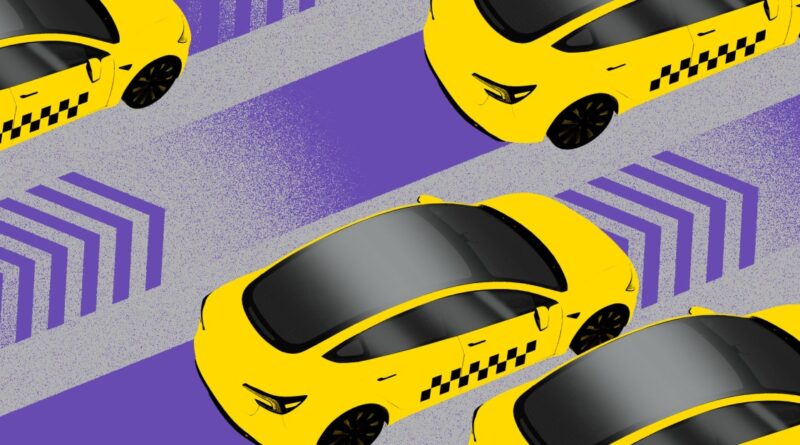How Texas’ hands-off approach to autonomous vehicles gave Tesla an opening
Last week, a Tesla Model Y with the word “ROBOTAXI” scratched into its side and no one in the driver seat made a turn off Austin’s bustling South Congress Avenue. Another Tesla, described by autonomous vehicle experts as a “chase vehicle,” followed closely behind.
Tesla CEO Elon Musk commented on the clip, seemingly confirming that the lead car was one of roughly 10 vehicles comprising the company’s robotaxi fleet, expected to make their official debut sometime next week. If that does occur, it will come nearly nine years after Musk first pitched the idea of a “Tesla Network” in which Tesla owners could add their vehicles to an autonomous ridehail fleet. And it will also be made possible, in no small part, by the state of Texas’ laissez-faire, AV-friendly regulatory environment.
“In Texas, pretty much anyone can get a [autonomous vehicles] permit who shows up and does a few administrative things,” Carnegie Mellon professor and autonomous vehicle expert Phil Koopman tells The Verge. “If you show up and you tell the state you’re operating and you have insurance, you’re good to go. That’s about it.”
That AV-friendly landscape — accelerated by a 2017 law that openly courted developers to the state — has arguably made Texas the leader in AV testing and real-world deployment outside the industry’s California birthplace. More than 100 lidar-equipped Waymo vehicles now roam the streets of Austin, offering paid Uber trips daily. Amazon-backed Zoox and about half a dozen other emerging AV companies are regularly seen testing on public roads alongside human drivers and pedestrians. Autonomous 18-wheeler trucks weighing 30,000 pounds operated by Aurora have already logged more than 1,200 miles on Texas highways.
“If you show up and you tell the state you’re operating and you have insurance, you’re good to go.”
But that fast lane for AV innovation, while bringing millions in investments to the Lone Star State, has also raised concerns among some lawmakers and experts who say the approach may put safety in the backseat. Due to a bold carve-out in Texas law, local governments are powerless to set their own AV regulations. Tesla, with its tendency to play fast and loose with rules, only amplifies those concerns.
Last year, Austin Mayor Kirk Watson criticized the state’s move to preempt local oversight. And in an interview with The Verge, Democratic state Sen. Sarah Eckhardt says she’s “concerned about the rushed rollout of Tesla’s autonomous vehicle program.” Eckhardt, who recently sent a letter to the Central Texas legislative delegation outlining her concerns, says she will be working to ensure Tesla “slows their roll” ahead of the company’s proposed June 22nd launch.
How Texas became a hotbed for AVs
The law states that AVs operating in Texas must comply with all traffic laws and be equipped with a video recording device, and it holds the vehicle’s manufacturer responsible when an AV breaks the law. But what’s more notable is what the legislation doesn’t say. As of now, there are no licensing or registration requirements for verifying the capabilities of autonomous vehicles, and no set standards for when a carmaker can remove safety drivers. Crucially, the law also states that no local government can enact regulations that supersede those of the state.
“Simply put, cities in Texas cannot regulate autonomous vehicles,” Richard Mendoza, the interim director of Austin’s Transportation and Public Works Department, wrote in a 2023 memo.
The legislation’s origins, according to lawmakers speaking with The Texas Tribune, dates to the early 2010s. At the time, there weren’t clear rules regarding AVs. Automakers and AV operators, through stakeholder meetings, wanted to encourage the passage of a law that removed the regulatory uncertainty and also didn’t overburden the industry with what they viewed as overbearing permitting requirements. As for the provision prohibiting cities from setting their own rules, University of Texas professor of transportation engineering Kara Kockelman says it helps avoid a patchwork of potentially conflicting laws that might make it difficult for AVs to travel between cities. But it can also create headaches for local officials who want more targeted regulations tailored to the specific needs or preferences of their city or region.
“Simply put, cities in Texas cannot regulate autonomous vehicles.”
That creates a far more permissive AV environment than in California, Koopman says. There, AV manufacturers are required to obtain a separate permit for autonomous deployment — a permit that local regulators have been known to revoke if a vehicle crashes. Texas, by contrast, takes a much more hands-off approach to removing safety drivers. Koopman notes that it is “entirely up to the companies” to decide when to go driverless. Even in stricter states like California, removing human drivers has sparked backlash.
Texas’ rules are poised to change. After years of advocates pushing for stronger guardrails, the legislature recently revised the 2017 law to require DMV approval before operating on public streets without a human operator. Those changes, however, don’t take effect until September 1st. Eckhardt, who was a leader in advancing the revision, wants Tesla to delay its launch until the new rules are in place. (Tesla and the Texas DOT did not respond to The Verge’s requests for comment.)
The rollout of AVs across the state is raising complex enforcement questions. Local lawmakers have reported feeling hamstrung because current rules prohibit them from advancing their own regulations. Last year, Mayor Watson, speaking at South by Southwest, said the situation hampers local officials’ ability to ensure safety.
“I’m all for profit margins and stuff, but ultimately the public good has to play a role in this, and it shouldn’t be sacrificed, and it shouldn’t be secondary to the profit of the private entity,” Watson said, according to The Hill.
Fast-forward to today, and local police are increasingly reporting difficulties dealing with the growing number of driverless cars. While some incidents are pretty funny — like an AV getting “stuck” in a taco shop parking lot — there have also been more serious reports of AVs unintentionally impeding emergency response vehicles. Austin police Lt. William White recently told Reuters that Waymo’s and the now-defunct Cruise’s AVs have a history of “freezing up” when responding to officers’ hand signals at festivals and other complex traffic situations.
“It’s been very frustrating on our end from a safety standpoint,” White told Reuters. “If these machines are learning, they’re not learning at a quick enough pace for sure.” (The mayor’s office and the police department did not immediately respond to requests for comment.)
Koopman notes that Musk’s “healthy risk appetite” may bring these tensions into sharper focus. Though it’s unclear just how autonomous Tesla robotaxis will be, experts worry its camera-only approach to the technology could cause more incidents. Simple traffic mistakes or crashes resulting in injuries could provoke a public backlash that affects not only Tesla but also other AV manufacturers like Waymo, which have taken a more cautious approach.
“If there is a major crash there is a risk that people will say, ‘Oh this is about the technology,’” Koopman says. The expectation for rollout, he adds, should be no serious missteps at all. “Being able to operate 10 cars with no serious crashes is table stakes,” Koopman says.




